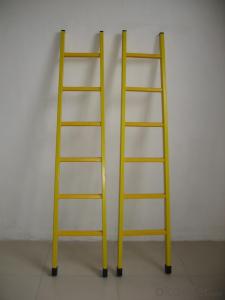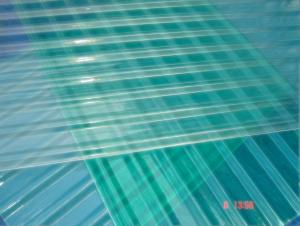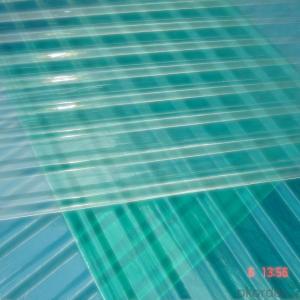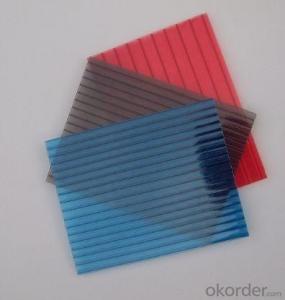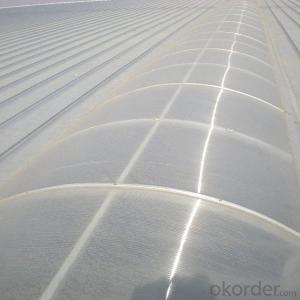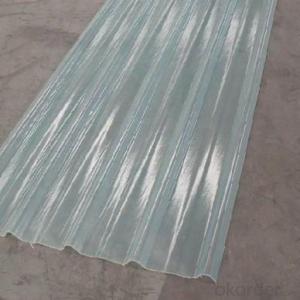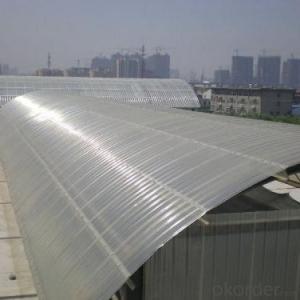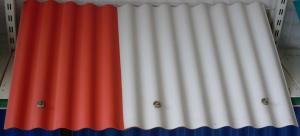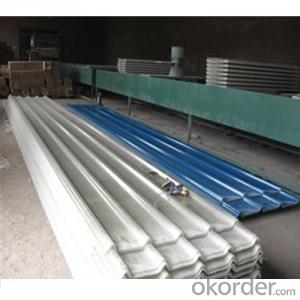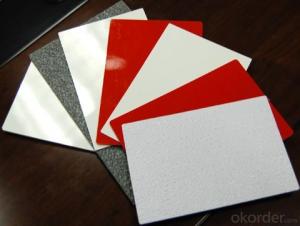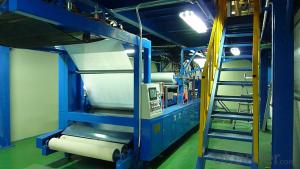Fiberglass Ladder,Fiberglass Folding Ladder ,FRP ladder
- Loading Port:
- Tianjin
- Payment Terms:
- TT or LC
- Min Order Qty:
- 500 m²
- Supply Capability:
- 50000 m²/month
OKorder Service Pledge
OKorder Financial Service
You Might Also Like
Introduction
FRP Ladder is assembled with pultrusion profiles and FRP Hand lay-up parts; with the strong points of high strength, easy assembly, non rust, and maintenance free, the FRP Ladder becomes an ideal solution in bad environments, such as chemical plant, marine, out door.
Product Traits
1. Made of high strengh aluminum alloy and fiberglass
2.Double uses: as A shaped ladder and straight ladder
3.With special locking device
4.Be convenient for carrying and stock
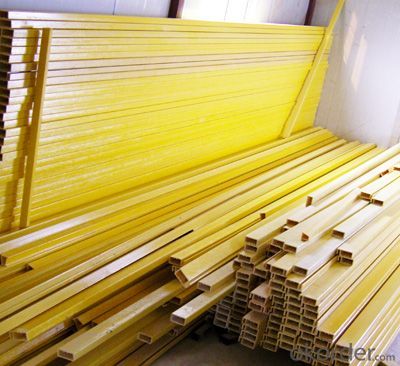
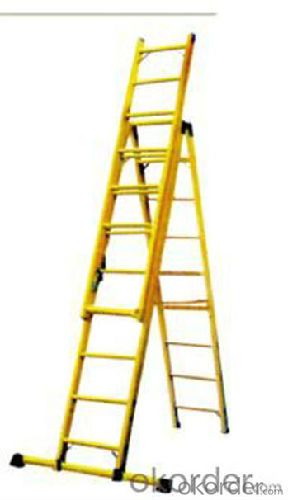
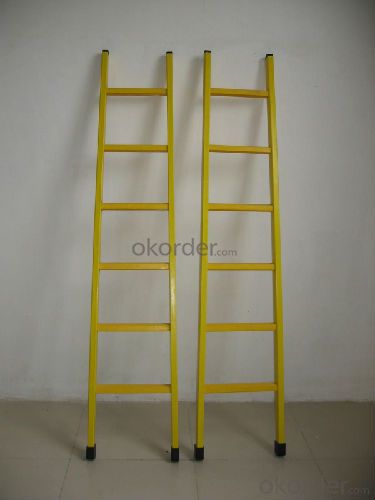
Advantages
1.Light quality,high strength,convenient to move
2.Low maintenance,well insulated
3.Folding ladders
4.ISO9001
Specification
1. Product Name: FRP Ladder
2. Material: FRP (fiberglass & ISO resin & other mixture)
3. Structure: Single Straight Ladders
4. Feature: Insulation Ladders, UV resistant, corrosion resistant
5. Type: Industrial Ladders
6. Color: Yellow, red and so on
7. Construction:
Rail: square tube rail
Rung: plum tube rung
Antiskid rubber plug
Step: plum tube 36x27x4.5mm
Prevent slippery plug: rubber
8. Advantage: corrosion resistant, fire retardant, impact resistant, high strength, non-magnetic, non-conductive, non-sparking, light weight, easy to install, easy to maintain.
We can design and produce all kinds of FRP telescopic ladder according to customer’s requirements.
FAQ
How long is the delivery time?
Usually it takes 10-25days after receipt of the deposits or L/C, and it also depends on the quantity of your order.
How's the payment?
Telegraphic Transfer(T/T) or Letter of Credit(L/C)
- Q:Can FRP roofing panels be used for greenhouses?
- Yes, FRP roofing panels can be used for greenhouses. FRP stands for Fiberglass Reinforced Plastic, and it is a versatile and durable material that has several advantages for greenhouse applications. Firstly, FRP roofing panels are lightweight yet strong, making them easy to handle and install. This is particularly beneficial for greenhouse structures as it reduces the need for heavy support structures and allows for more flexibility in design. Secondly, FRP panels have excellent light transmission properties, allowing for optimal sunlight penetration into the greenhouse. This is crucial for plant growth and ensures that the plants receive the necessary amount of sunlight for photosynthesis. Additionally, the panels can be designed to provide UV protection, preventing harmful rays from damaging the plants. Furthermore, FRP panels are resistant to corrosion, chemicals, and weathering, making them highly durable in harsh greenhouse environments. They are also resistant to mold, mildew, and pests, which can commonly occur in humid greenhouse conditions. This durability ensures a longer lifespan for the panels, reducing maintenance and replacement costs. Lastly, FRP panels are available in a variety of colors and finishes, allowing for customization to suit specific greenhouse design preferences. They can be transparent, translucent, or opaque, providing options for light control and privacy. In conclusion, FRP roofing panels are a suitable choice for greenhouses due to their lightweight nature, excellent light transmission, durability, and customization options. They contribute to creating an optimal growing environment for plants while offering long-term benefits for greenhouse owners.
- Q:Can FRP roofing panels be used for both residential and commercial noise barriers?
- Yes, FRP roofing panels can be used for both residential and commercial noise barriers. Their sturdy and durable construction, along with their ability to reduce sound transmission, makes them an ideal choice for creating effective noise barriers in both residential and commercial settings.
- Q:Can FRP roofing panels be painted?
- Yes, FRP (Fiberglass Reinforced Plastic) roofing panels can be painted. However, it is important to follow specific guidelines to ensure proper adhesion and longevity of the paint. Firstly, the FRP panels should be thoroughly cleaned and free of any dust, dirt, or debris. It is recommended to use a mild detergent and water solution to clean the surface. Once the panels are clean and dry, a primer designed for use on FRP should be applied. This helps the paint adhere to the surface and provides a better finish. After the primer has dried, a high-quality exterior-grade paint can be applied using a brush, roller, or spray gun. It is essential to choose a paint that is compatible with fiberglass and suitable for outdoor use. It is also advisable to apply multiple thin coats of paint rather than a thick coat to achieve a more even and durable finish. Overall, with proper preparation and the right paint products, FRP roofing panels can be successfully painted to enhance their appearance and protect them from the elements.
- Q:Are FRP roofing panels resistant to saltwater corrosion?
- FRP roofing panels, known for their exceptional chemical resistance, including resistance to saltwater, are generally resistant to saltwater corrosion. This quality makes them a suitable choice for roofing in coastal areas or locations with high salt content in the air. The corrosion-resistant properties of FRP panels ensure that they can withstand prolonged saltwater exposure without deteriorating or losing their structural integrity. However, it is worth noting that the level of resistance may vary depending on the specific composition and quality of the panels. Consulting manufacturers or experts in the field is always advisable to ensure that the chosen FRP roofing panels are appropriate for the intended application and environment.
- Q:Are FRP roofing panels energy efficient?
- FRP roofing panels are renowned for their energy efficiency. They are designed to reflect sunlight and heat away from the building, thereby reducing heat absorption. This reflective feature keeps the building cooler, particularly in hot summer months, and minimizes the reliance on excessive air conditioning. Consequently, FRP roofing panels can lead to energy savings and reduced energy bills by decreasing the cooling load. Furthermore, FRP roofing panels often incorporate insulation properties that enhance their energy efficiency even further. This insulation assists in regulating the building's temperature, preventing heat loss during colder months and heat gain during warmer months. Consequently, these insulation capabilities can lead to lower heating and cooling expenses, making FRP roofing panels an excellent choice for energy efficiency. Moreover, FRP roofing panels are highly durable and long-lasting, requiring minimal maintenance and replacement. This longevity reduces the need for the production and disposal of new roofing materials, which, in turn, results in a lower environmental impact and long-term energy savings. To summarize, FRP roofing panels offer energy efficiency through their reflective properties, insulation capabilities, and durability. They contribute to reduced energy consumption, lower energy bills, and a more sustainable and environmentally friendly building.
- Q:Can FRP roofing panels be installed on existing roofs?
- Yes, FRP (Fiberglass Reinforced Plastic) roofing panels can be installed on existing roofs. However, certain factors need to be considered before installation. Firstly, the condition of the existing roof needs to be assessed to ensure it is structurally sound and can support the weight of the FRP panels. Additionally, the compatibility of the existing roof material with FRP panels should be evaluated. If the existing roof is in good condition and compatible with FRP panels, the installation process typically involves cleaning the roof surface, removing any loose or damaged materials, and preparing it for the installation of the FRP panels. This may include applying primer or adhesive to the roof surface to improve adhesion. It is important to follow the manufacturer's guidelines and recommended installation methods to ensure a proper and secure installation. Additionally, it is advisable to consult with a professional roofing contractor or FRP panel supplier for expert advice and assistance during the installation process. Overall, while FRP roofing panels can be installed on existing roofs, it is crucial to consider various factors and consult professionals to ensure a successful installation that meets all safety and performance requirements.
- Q:Can FRP roofing panels be used in areas with frequent lightning strikes?
- FRP roofing panels can indeed be utilized in regions with prevalent lightning occurrences. These panels are renowned for their remarkable electrical insulation properties, rendering them an appropriate choice for such high-risk zones. The fiberglass material incorporated in FRP panels is non-conductive, implying that it does not conduct electricity. This characteristic guarantees that the panels do not attract or conduct lightning strikes, thus diminishing the likelihood of damage or fire hazards. Furthermore, FRP panels also possess resistance against corrosion, thereby augmenting their suitability for areas prone to frequent lightning strikes. Nevertheless, it is imperative to acknowledge that although FRP panels may offer a degree of protection against lightning, it is always advisable to seek advice from a professional or adhere to local building codes and regulations to ensure the proper installation and implementation of safety measures.
- Q:Are FRP roofing panels suitable for flat roofs?
- FRP roofing panels are indeed appropriate for flat roofs. Their lightweight nature, durability, and superb resistance against UV rays, weathering, and corrosion make them an optimal choice. Moreover, their high strength-to-weight ratio renders them ideal for flat roofs where weight is a potential issue. Furthermore, FRP panels possess commendable thermal insulation characteristics, effectively regulating temperature and reducing energy consumption. Additionally, they are effortlessly installed and maintained, establishing them as a cost-efficient option for flat roof applications.
- Q:How do FRP roofing panels perform in high winds?
- High winds are no match for FRP (Fiberglass Reinforced Plastic) roofing panels. These panels are renowned for their exceptional performance in windy conditions. They are designed to be lightweight but strong, allowing them to withstand powerful winds without sustaining damage. The fiberglass reinforcement in the panels provides impressive strength, ensuring their durability and longevity. The effectiveness of FRP roofing panels in high winds can vary depending on factors like panel thickness, installation method, and overall roofing system design. However, in general, FRP panels have demonstrated their ability to resist wind uplift and endure winds of various speeds. One major advantage of FRP roofing panels is their flexibility and ability to absorb the forces exerted by high winds. This flexibility enables the panels to distribute the wind load evenly across the entire roof surface, minimizing the risk of localized damage or failure. Additionally, the rigid fiberglass reinforcement enhances the panels' structural integrity, preventing them from buckling or warping under wind pressure. Proper installation is crucial to maximize the performance of FRP roofing panels in high winds. It is essential to ensure adequate fastening and secure attachment to the underlying roof structure. Engaging experienced professionals who have worked with FRP panels can guarantee correct installation and optimal performance during high wind events. In conclusion, FRP roofing panels are an excellent choice for areas prone to high winds and severe weather conditions. Their combination of lightweight yet sturdy construction, along with their ability to flex and distribute wind loads, makes them a reliable and durable option for protecting buildings against wind damage.
- Q:Are FRP roofing panels fire resistant?
- FRP roofing panels, commonly known as Fiberglass Reinforced Plastic, possess fire-resistant properties. The fiberglass material utilized in these panels exhibits a remarkable resistance to fire, rendering them suitable for installation in areas prioritizing fire safety. These panels have undergone rigorous testing and certification to ensure compliance with specific fire safety standards, such as the ASTM E84 Class A fire rating. Consequently, their flame spread is minimal, and they do not significantly contribute to the propagation or expansion of fire. Furthermore, FRP roofing panels frequently find application in industrial and commercial structures where fire resistance is a mandatory requirement. Nevertheless, it is crucial to acknowledge that although FRP panels are fire-resistant, they are not entirely fireproof. Therefore, in the unfortunate event of a fire, it remains imperative to diligently adhere to proper fire safety protocols.
1. Manufacturer Overview |
|
|---|---|
| Location | |
| Year Established | |
| Annual Output Value | |
| Main Markets | |
| Company Certifications | |
2. Manufacturer Certificates |
|
|---|---|
| a) Certification Name | |
| Range | |
| Reference | |
| Validity Period | |
3. Manufacturer Capability |
|
|---|---|
| a)Trade Capacity | |
| Nearest Port | |
| Export Percentage | |
| No.of Employees in Trade Department | |
| Language Spoken: | |
| b)Factory Information | |
| Factory Size: | |
| No. of Production Lines | |
| Contract Manufacturing | |
| Product Price Range | |
Send your message to us
Fiberglass Ladder,Fiberglass Folding Ladder ,FRP ladder
- Loading Port:
- Tianjin
- Payment Terms:
- TT or LC
- Min Order Qty:
- 500 m²
- Supply Capability:
- 50000 m²/month
OKorder Service Pledge
OKorder Financial Service
Similar products
New products
Hot products
Related keywords
